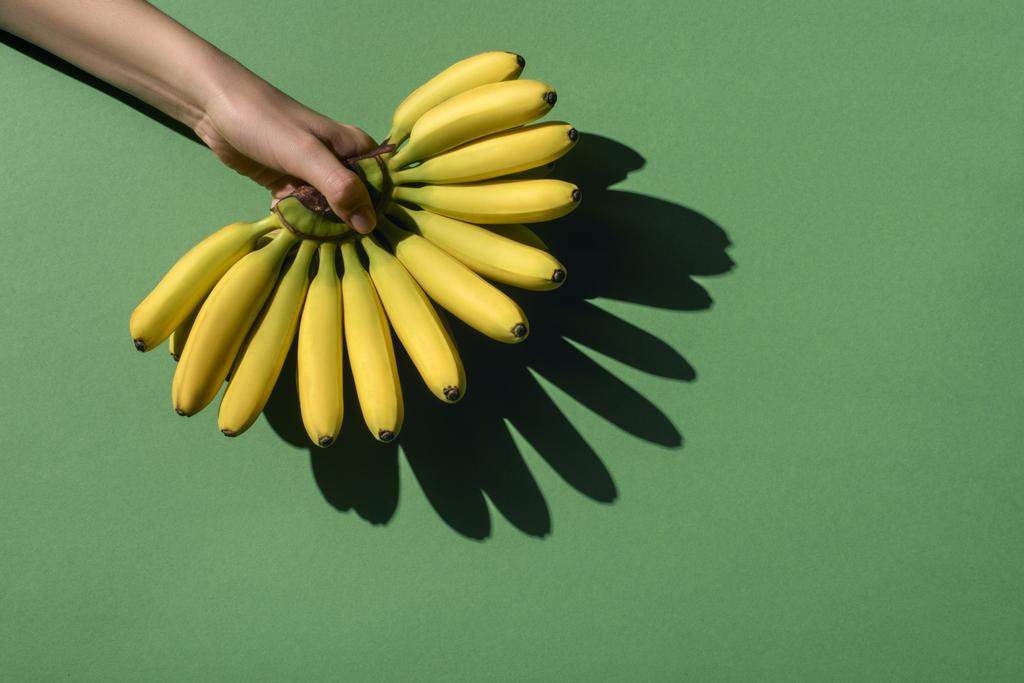Bananas are considered healthy and are therefore suitable as a snack in between. But how many vitamins are actually contained in the banana? Everything about carbohydrates, calories and other nutritional values of bananas can be found on this page.
Athletes like to grab a banana before training – after all, it’s so healthy. But what healthy qualities are actually found in it?
It is striking that the banana contains significantly more carbohydrates and fructose than other fruits. Nevertheless, it is not fattening – on the contrary: fructose is a quick source of energy and therefore popular with athletes. The body quickly burns the carbohydrates again during exercise.
The banana is also suitable as a snack without doing sport afterwards: bananas are very filling and are therefore even recommended for losing weight.

Healthy bananas: nutritional values at a glance
Bananas are real fillers. The exact amount of each nutrient depends very much on how ripe the banana is. For example, particularly ripe bananas contain more sugar than green bananas and are also easier to digest. However, the amount of carbohydrates does not change.
Nutritional table for bananas per 100 grams:
Energy: 96 kcal / 402.0 kJ
Fat: 0.2g
Carbohydrates: 22 g
of which sugar: 17.2 g
Protein 1.1g
Dietary fiber: 2 g
Vitamins in Bananas
Like most fruits, the banana is also rich in vitamins. The amount of vitamin B6 is particularly high. A banana covers about a third of the daily requirement. However, vitamin B6 is not rare, but is found in numerous foods.
Vitamins per 100 grams of banana:
Vitamin A: 10 mcg
Vitamin B1: 40 mcg
Vitamin B2: 60 mcg
Vitamin B6: 0.36 mg
Vitamin C: 12 mg
Vitamin E: 0.27 mg
Vitamin K: 10 mcg
Bananas are also high in manganese, copper, potassium and magnesium. Just one banana covers more than 10 percent of the daily requirement of these four substances.
Bananas for cancer?
According to various studies, bananas and banana peels can reduce the risk of cancer:
A study from 2015, for example, suggests that bananas can reduce the risk of cancer. It showed that the fruit has antimicrobial and antioxidant effects. According to the scientists, bananas can also strengthen the immune system.
In a 2013 study, Japanese researchers pointed out that ripe bananas contain many antioxidants. Among other things, they work against free radicals in the body and strengthen the immune system up to eight times more than green bananas.
Bananas are also said to be able to prevent the risk of arteriosclerosis and stomach ulcers
A Matter of Color: Are Green Bananas Healthy?
During the ripening process, the banana converts starch into sugar. So a green banana contains a lot of starch and little sugar, while a yellow banana is exactly the opposite. With yellow bananas, the body no longer has to convert the starch into sugar itself. Instead, the energy from the sugar is immediately available and the blood sugar level rises immediately after eating the yellow banana.
It’s different with the green banana: Here the body has to convert a lot of starch into sugar itself. Therefore, the blood sugar level does not rise immediately and you are full longer. However, green bananas also contain a lot of cellulose. The intestines cannot digest these very well, which can result in abdominal pain.
Conclusion: Green bananas are the better choice for diabetics, everyone else is better off reaching for ripe yellow bananas.
Tip: If the bananas are very ripe and already have brown spots, you should definitely not throw them away. They are great for banana milk, banana smoothie and banana bread.

